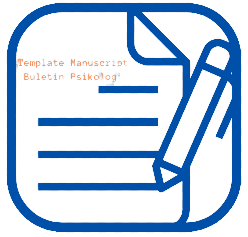Penelusuran Karakteristik Hasil Tes Inteligensi WISC Pada Anak Dengan Gangguan Pemusatan Perhatian Dan Hiperaktivitas
- Nanik(1*)
(1)
(*) Corresponding Author
Abstract
By considering the impact of Attention Deficit and Hyperactivity Disorder (ADHD) to the future children education, the exploration of intelligence test result charac-teristic of children with ADHD is needed. The purpose of the explanation is to help children with ADHD to cope their obstacle in actualizing their intelligence potency through appropriate educational guidance. Intelligence test result characteristic with Wechsler Intelligence Children Scale (WISC) test is explored on 10 boys with ADHD aged 6 – 12 years old in Surabaya. The data is interpreted according to Glasser and Zimmerman, Ogdon Sattler, and Jose/ Goewens reference and is described with the additional data quantitatively. Children with ADHD have low score in some WISC sub¬tests. The rank of the scores from the lowest is object assembly, picture arrangement, information, comprehension, digit span, and block design. The subtests reflect the limited capacity of children with ADHD in visual motor coordination, visual perception organization, visual-spatial relationship and field dependence, sequence ability, planning ability, effects of uncer¬tainty, and social sensitivity. By knowing these limitations, it is understandable why children with ADHD have problems in behavior, social, cognitive, academic, and emotional. The limitations of ADHD children in actualizing their intelligence potency is related to the disfunction of the right hemisphere.
Keywords: Intelligence test, WISC, ADHD.
Keywords: Intelligence test, WISC, ADHD.
Full Text:
PDFArticle Metrics
Refbacks
- There are currently no refbacks.
Copyright (c)
 Jurnal Psikologi (jpsi) is licensed under a Creative Commons Attribution-ShareAlike 4.0 International License.
Jurnal Psikologi (jpsi) is licensed under a Creative Commons Attribution-ShareAlike 4.0 International License.





